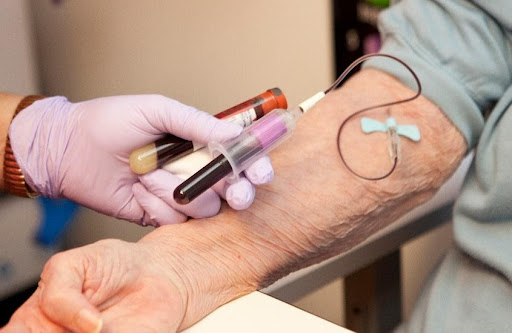4 Simple Techniques For Northeast Medical Institute - New Haven Campus Phlebotomy Course & Cna Class
4 Simple Techniques For Northeast Medical Institute - New Haven Campus Phlebotomy Course & Cna Class
Blog Article
Northeast Medical Institute - New Haven Campus Phlebotomy Course & Cna Class for Dummies
Table of ContentsOur Northeast Medical Institute - New Haven Campus Phlebotomy Course & Cna Class DiariesThe 10-Second Trick For Northeast Medical Institute - New Haven Campus Phlebotomy Course & Cna ClassUnknown Facts About Northeast Medical Institute - New Haven Campus Phlebotomy Course & Cna ClassNortheast Medical Institute - New Haven Campus Phlebotomy Course & Cna Class - TruthsNortheast Medical Institute - New Haven Campus Phlebotomy Course & Cna Class Things To Know Before You BuyA Biased View of Northeast Medical Institute - New Haven Campus Phlebotomy Course & Cna Class
The use of such tools should be come with by various other infection prevention and control techniques, and training in their usage.For settings with reduced resources, cost is a motoring element in purchase of safety-engineered gadgets - PCT Classes. Where safety-engineered gadgets are not available, proficient use a needle and syringe is acceptable. Unintentional direct exposure and details details about an event need to be taped in a register. Support services need to be promoted for those who go through unintended direct exposure.
One of the important pens of quality of care in phlebotomy is the involvement and teamwork of the individual; this is equally valuable to both the health and wellness employee and the patient. Clear info either composed or spoken must be readily available to every individual that undertakes phlebotomy. Annex F provides sample text for discussing the blood-sampling treatment to a person. labelling); transport problems; interpretation of results for clinical management. In an outpatient department or clinic, provide a dedicated phlebotomy cubicle containing: a clean surface area with 2 chairs (one for the phlebotomist and the various other for the client); a hand clean basin with soap, running water and paper towels; alcohol hand rub. In the blood-sampling area for an outpatient department or center, give a comfortable reclining sofa with an arm rest.
The Only Guide for Northeast Medical Institute - New Haven Campus Phlebotomy Course & Cna Class
Make sure that the indicators for blood tasting are plainly specified, either in a composed method or in documented guidelines (e.g. in a lab kind). In any way times, comply with the techniques for infection avoidance and control provided in Table 2.2. Infection avoidance and control methods. Collect all the devices required for the treatment and location it within secure and easy reach on a tray or trolley, guaranteeing that all the things are plainly visible.
Introduce on your own to the person, and ask the individual to state their complete name. Inspect that the lab type matches the client's identity (i.e. match the person's information with the lab type, to make certain exact recognition).
Make the individual comfortable in a supine placement (when possible). Location a tidy paper or towel under the client's arm. Talk about the test to be carried out (see Annex F) and obtain verbal consent. The patient has a right to reject a test at any kind of time before the blood sampling, so it is necessary to make certain that the individual has understood the treatment.
Some Known Factual Statements About Northeast Medical Institute - New Haven Campus Phlebotomy Course & Cna Class
Expand the patient's arm and examine the antecubital fossa or forearm. Find a capillary of a good size that is noticeable, straight and clear.
DO NOT insert the needle where veins are diverting, because this increases the chance of a haematoma. The blood vessel should be visible without applying the tourniquet. Situating the blood vessel will certainly aid in identifying the appropriate size of needle. Apply the tourniquet concerning 45 finger sizes over the venepuncture site and re-examine the vein.
Samplings from central lines bring a risk of contamination or incorrect laboratory examination results. It is appropriate, yet not perfect, to attract blood specimens when initial introducing an in-dwelling venous tool, prior to connecting the cannula to the intravenous liquids.
The 9-Second Trick For Northeast Medical Institute - New Haven Campus Phlebotomy Course & Cna Class
Failure to allow sufficient call time raises the threat of contamination. DO NOT touch the cleansed site; in certain, DO NOT position a finger over the vein to guide the shaft of the exposed needle.
Ask the client to develop a fist so the blood vessels are much more my sources popular. Go into the capillary swiftly at a 30 degree angle or less, and proceed to present the needle along the capillary at the easiest angle of access - Phlebotomy Training. Once sufficient blood has been accumulated, release the tourniquet BEFORE taking out the needle
9 Easy Facts About Northeast Medical Institute - New Haven Campus Phlebotomy Course & Cna Class Described
Withdraw the needle delicately and apply mild stress to the site with a tidy gauze or dry cotton-wool ball. Ask the individual to hold the gauze or cotton wool in position, with the arm expanded and raised. Ask the individual NOT to flex the arm, due to the fact that doing so causes a haematoma.

Northeast Medical Institute - New Haven Campus Phlebotomy Course & Cna Class for Beginners
Do not press the syringe bettor because extra stress raises the threat of haemolysis. Where possible, keep the tubes in a rack and move the rack in the direction of you. Infuse downwards into the appropriate coloured stopper. DO NOT remove the stopper since it will release the vacuum. If the example tube does not have a rubber stopper, inject extremely slowly into television as decreasing the stress and velocity used to move the sampling reduces the danger of haemolysis.

Report this page